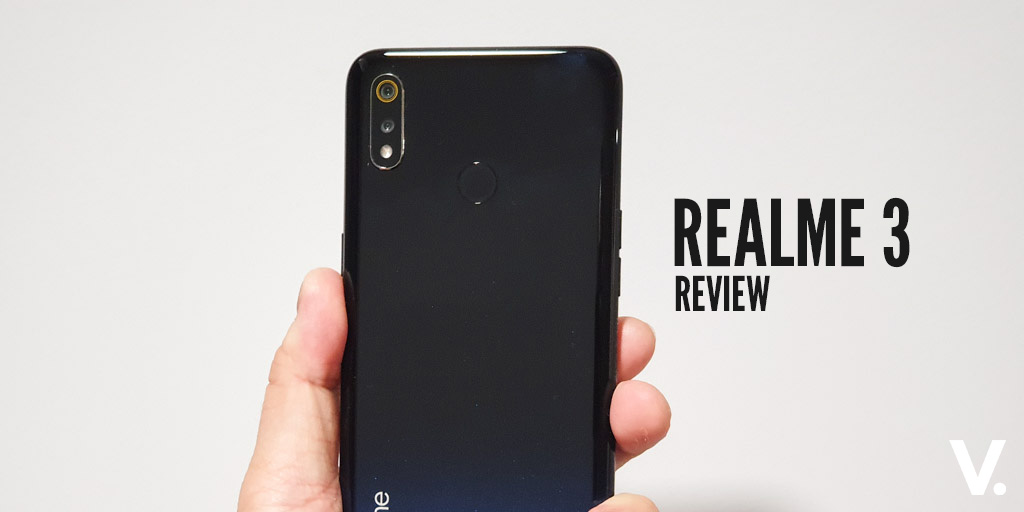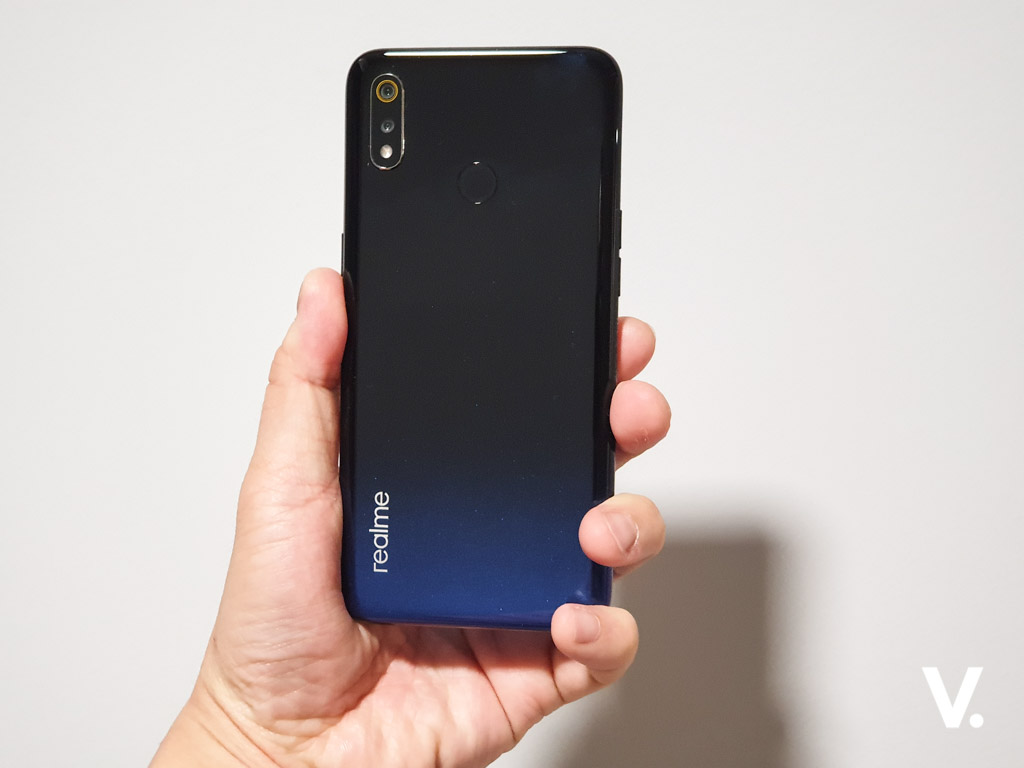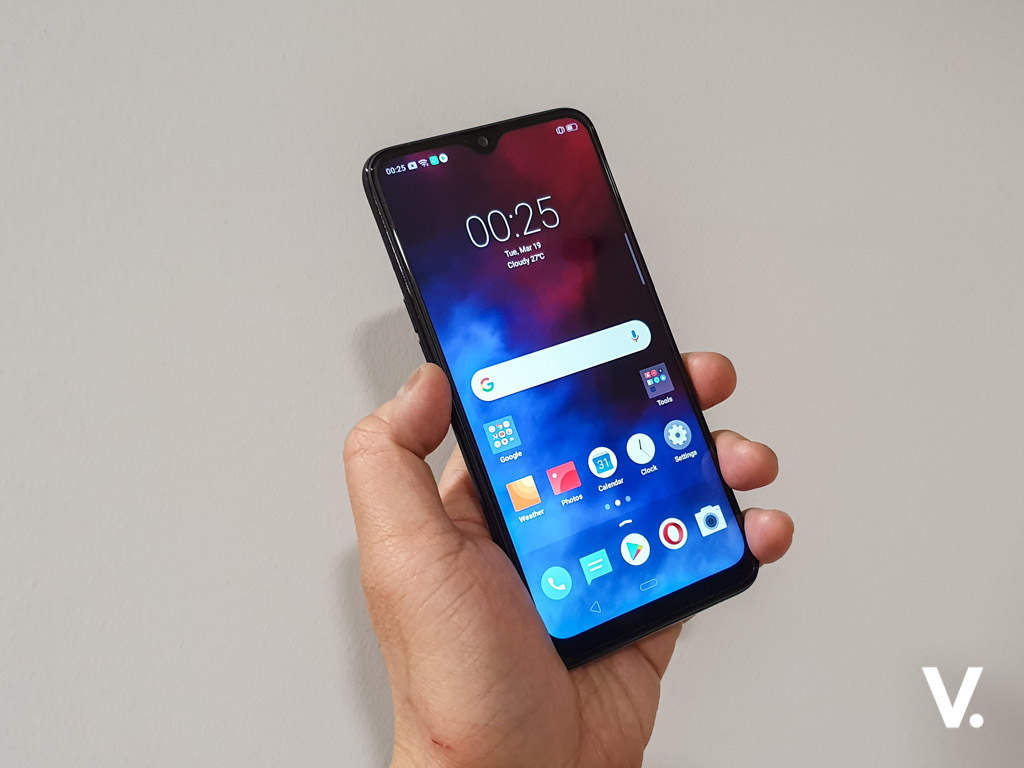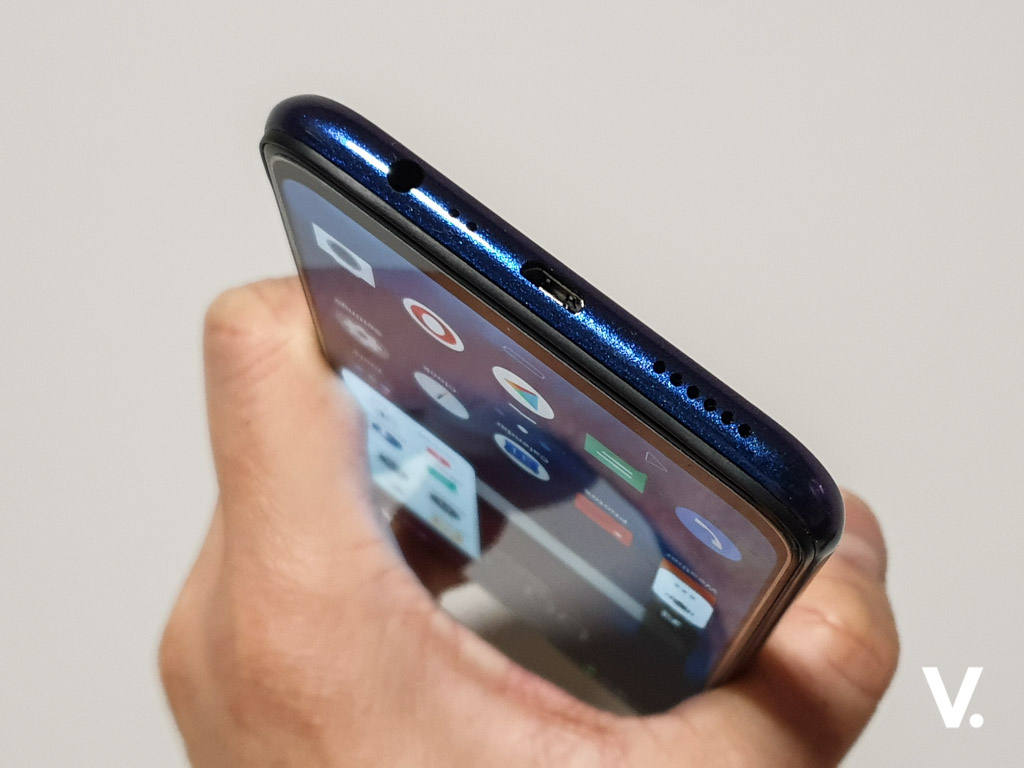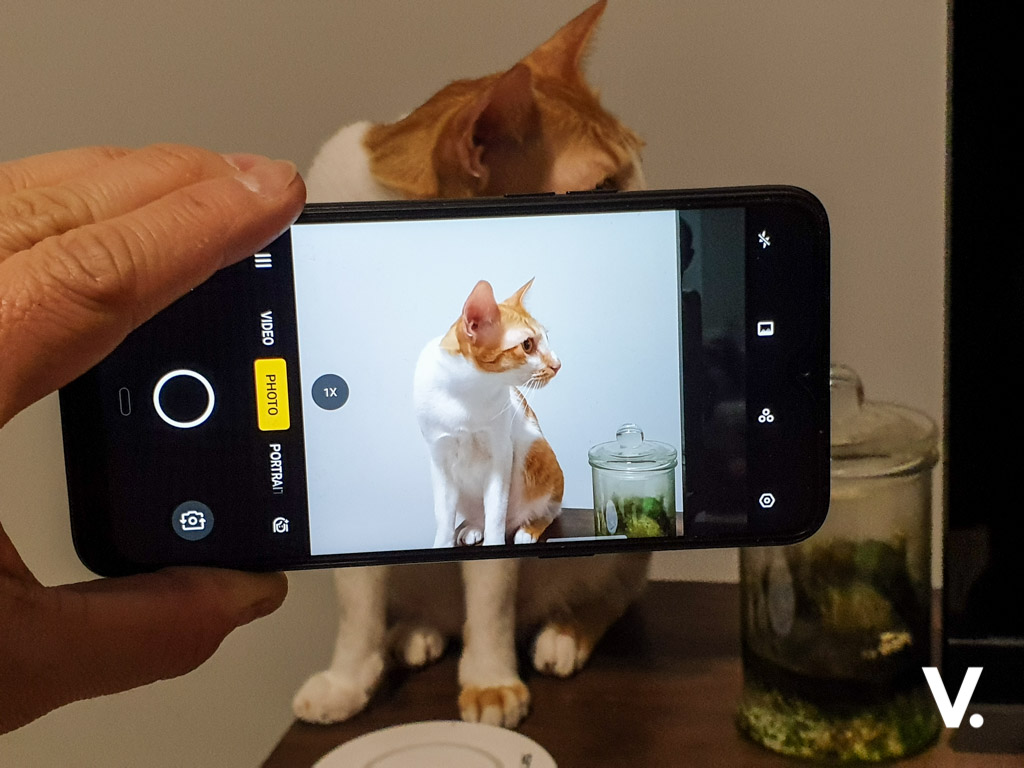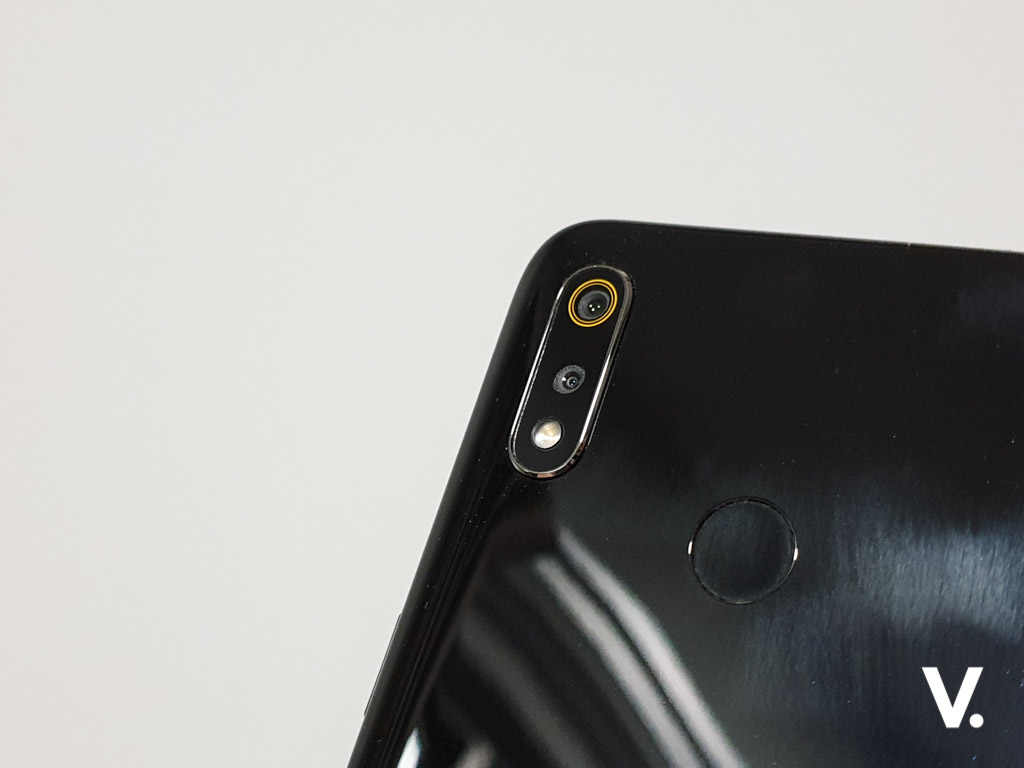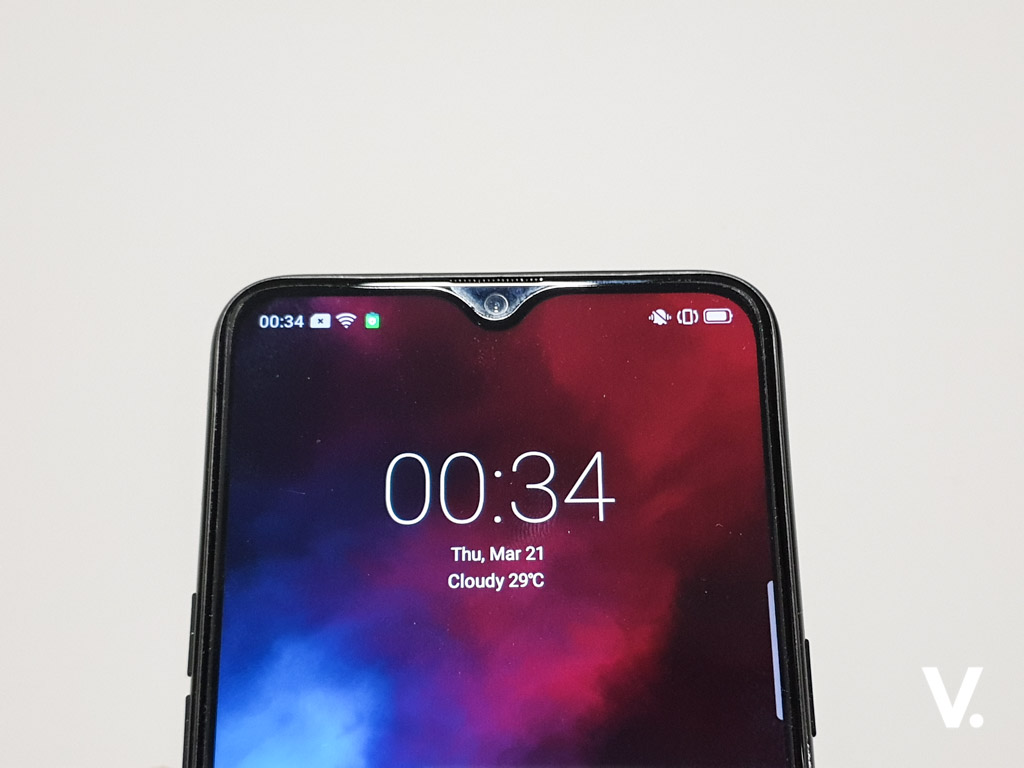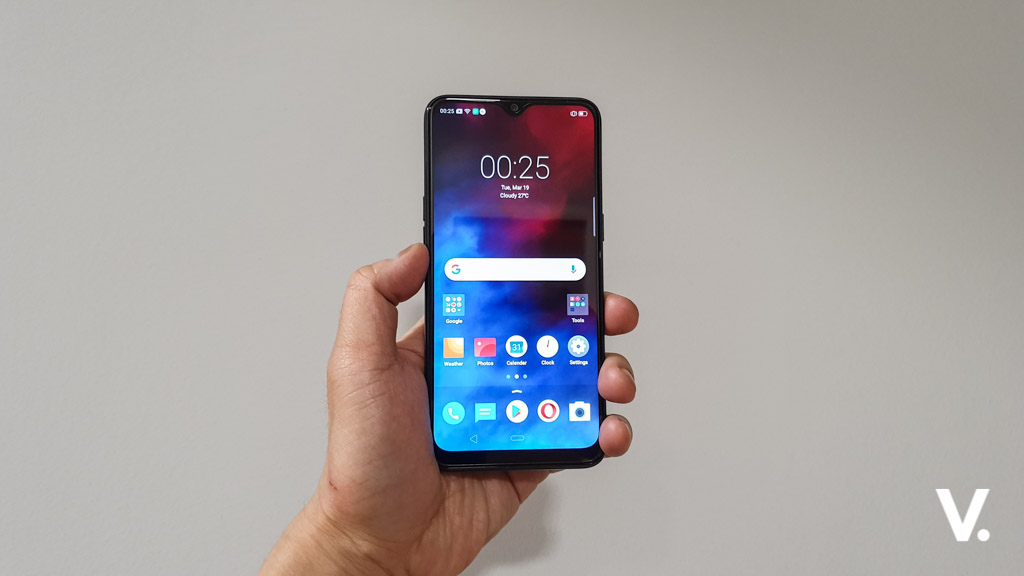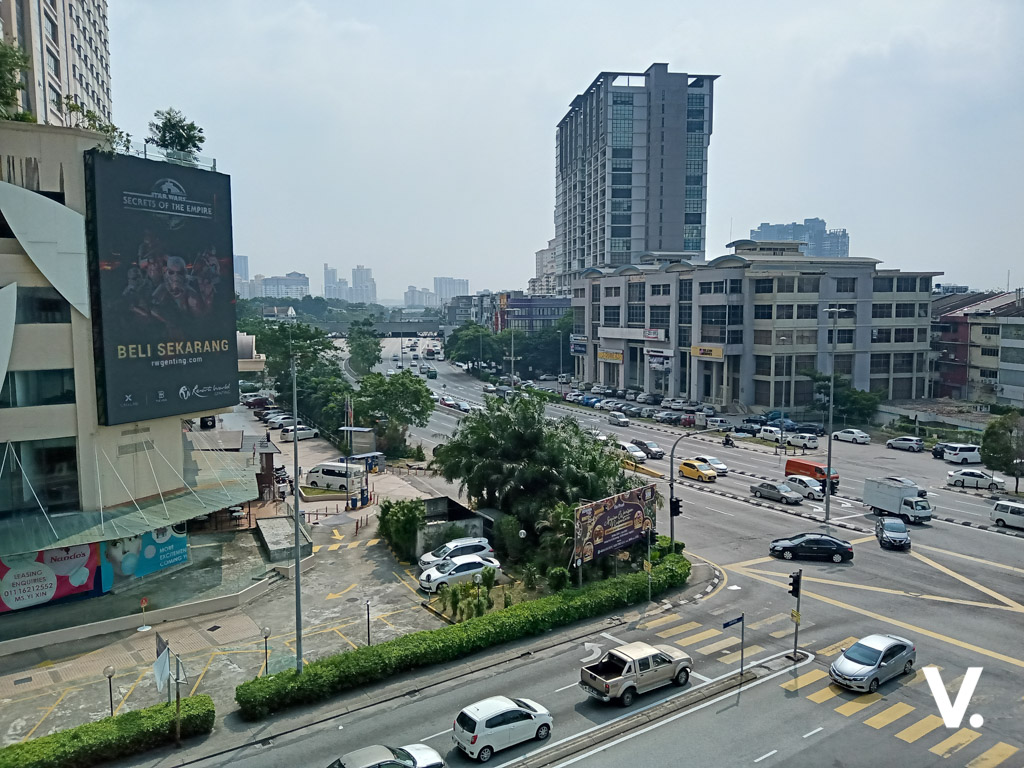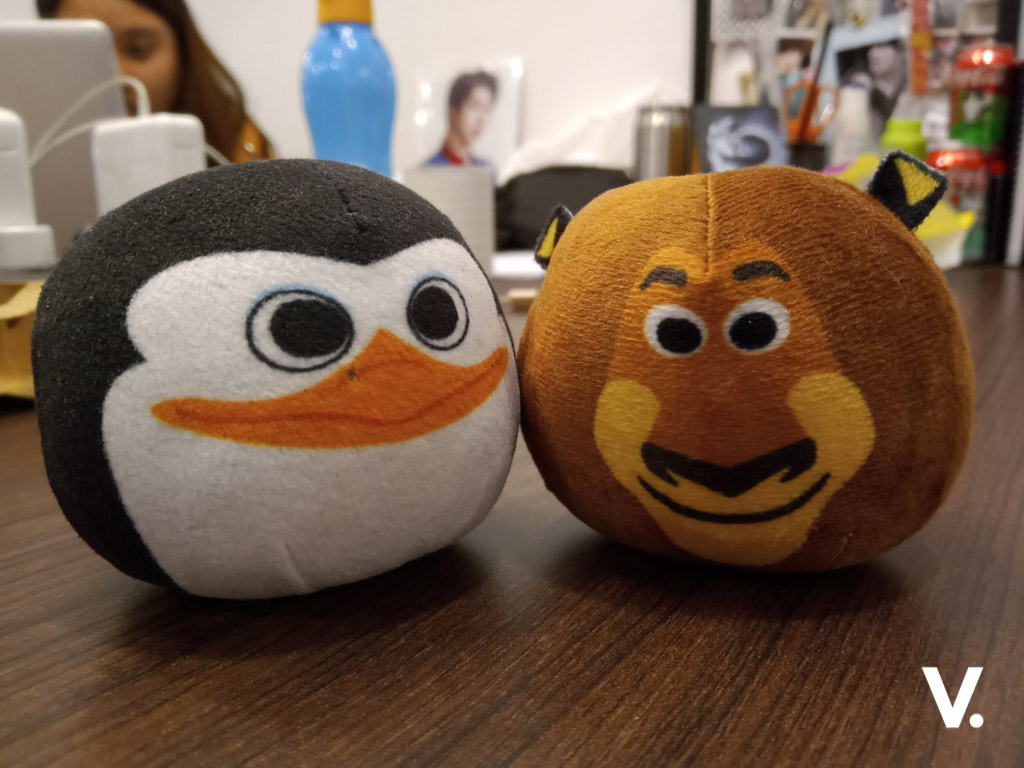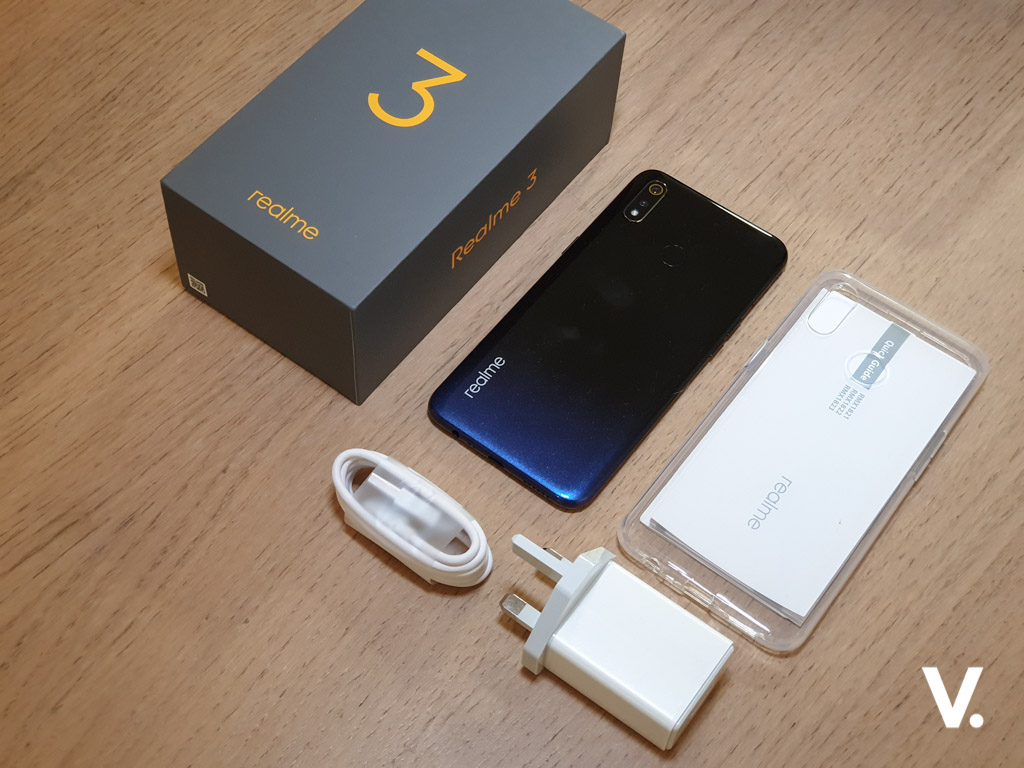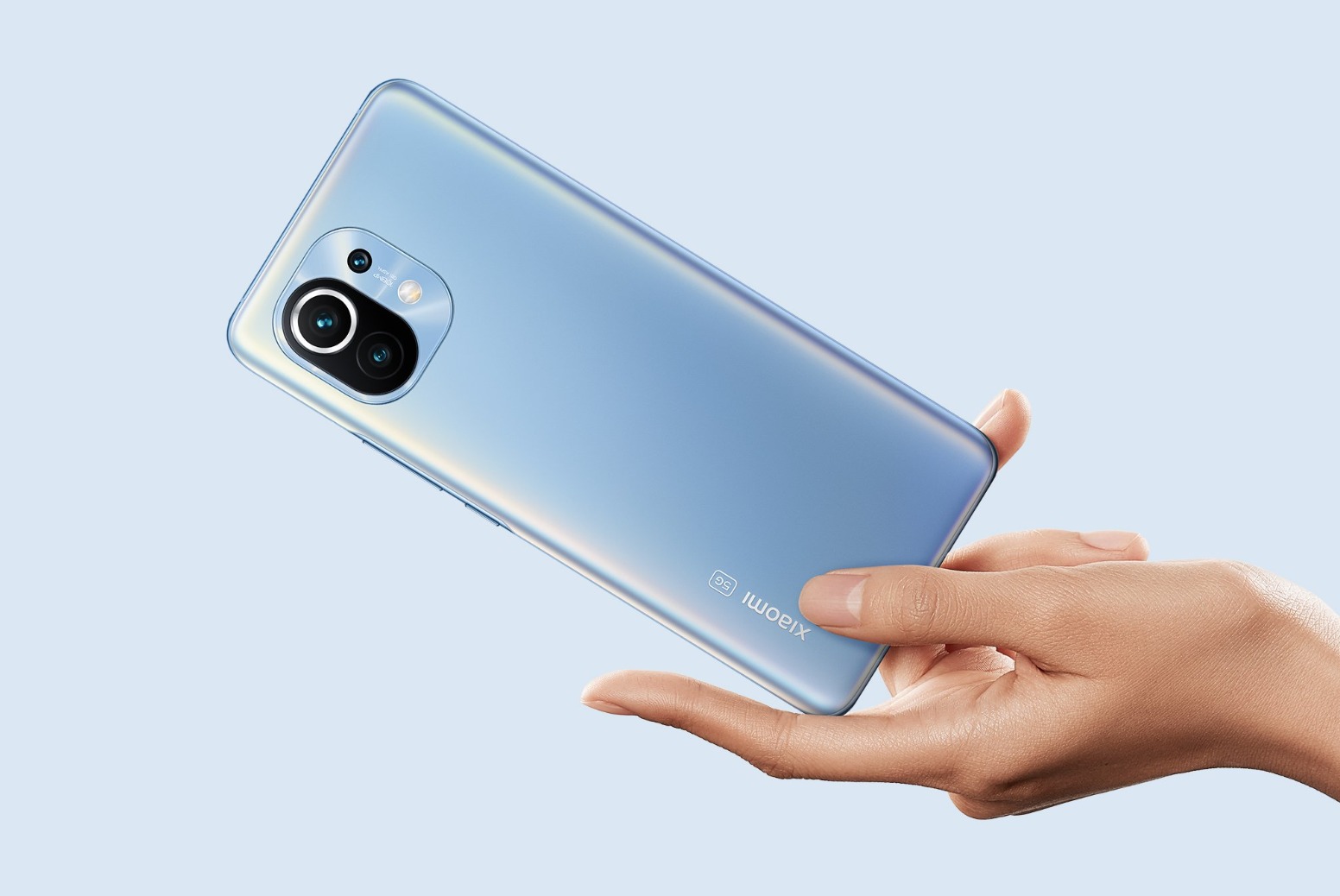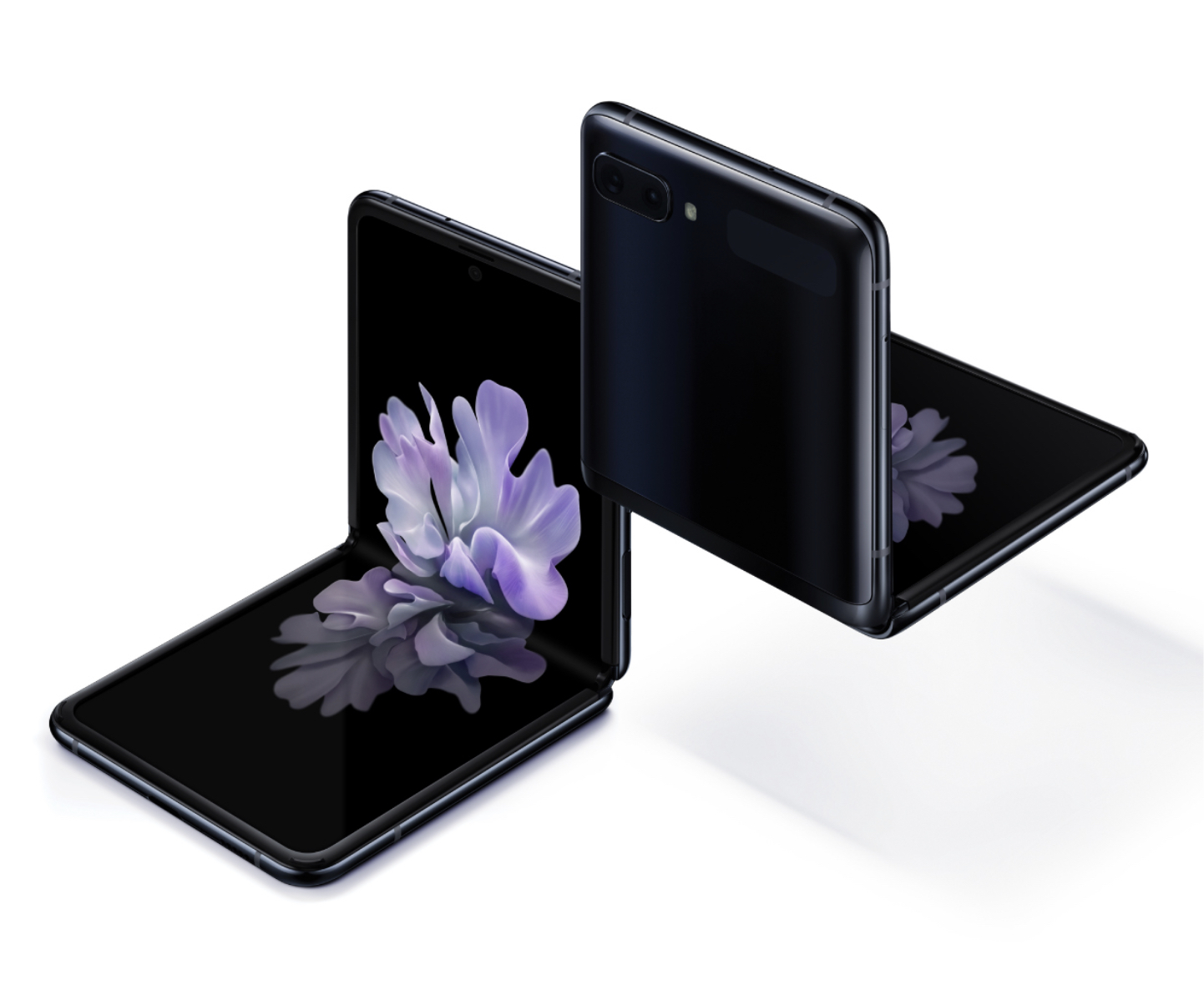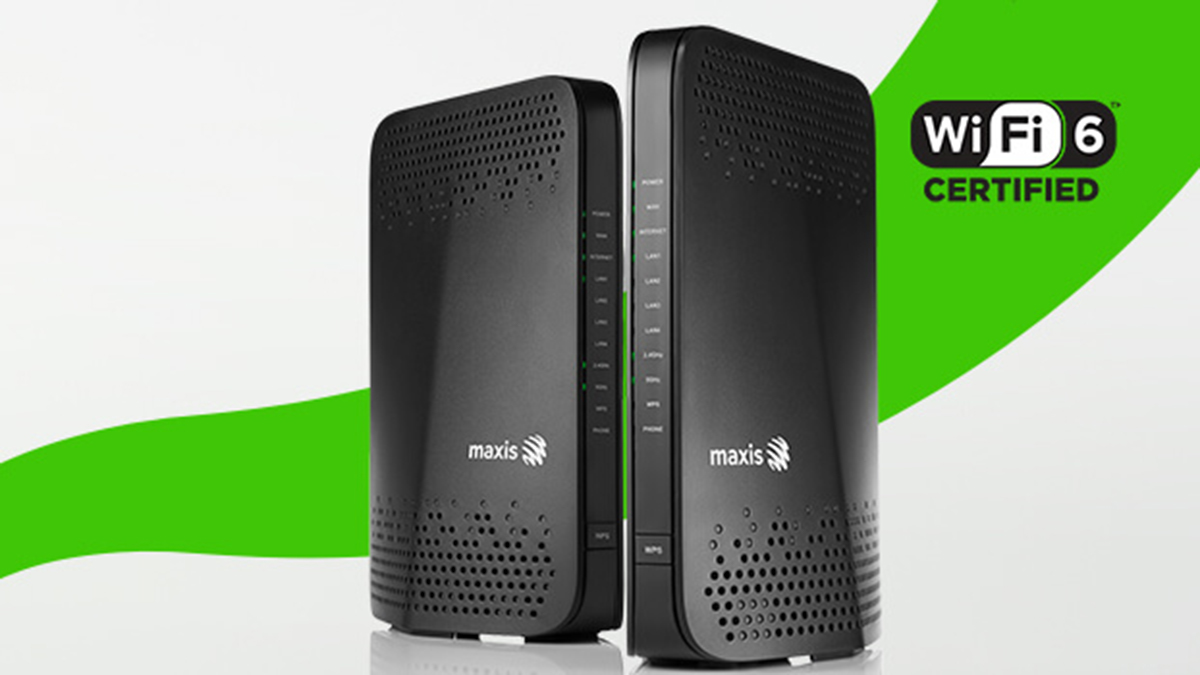If I didn’t know better, it would seem like realme is trying to make up for lost time as new devices from them just seems to be flying out their wazoo. They’re barely a year old and they have already released nine devices including the realme 3 and upcoming realme 3 Pro. The way I see it, it’s not a bad thing but it’s not entirely a good thing either.
So does this rapid fire style of releases benefit devices such as the realme 3 or does it cause it to be just a device with a new coat of paint and minor upgrades? Here’s my review of the realme 3.
Design & Build
When I reviewed the realme 2 pro in September last year, I said I was “underwhelmed with the looks of it as it was a tad boring”. I’m glad to say that I don’t feel that way with the realme 3 as I do like the updated design of the device.
The diamond like patterns have been replaced with a very subtle and stylish gradient that was inspired by the milky way or northern lights. As the colour shifting part is only located at the bottom of the rear of the device and takes up only about 30% of the rear, it isn’t too garish or overly done. I really like the Dynamic Black variant as it’s a good mix of a solid colour and shiny particles, making it look like a starry night sky.
Besides that, I also really like the form factor of the realme 3 as it’s super comfortable to hold and operate with just one hand despite having a 6.2-inch display. There’s also the fact that the corners and edges are rounded, making it much easier to hold. On top of that, the realme 3 has a dew drop notch, very slim bezels and a 88.30% screen-to-body ratio, which makes it feel smaller than it actually is.
Similar to other realme devices, the realme 3 is still made entirely out of polycarbonate save for the Corning Gorilla Glass that protects the display. The plastic rear as always is extremely fingerprint- and smudge-prone. Overall though, the device still feels extremely solid and well built with no flexing or creaking whatsoever.
Located around the phone are the standard ports and buttons we’ve all come to expect. On the left, you have the slightly mushy volume rockers below the triple card slot, on the left is the also slightly mushy power/unlock button and on the bottom you have the micro-USB charging port flanked by the single loudspeaker and 3.5mm headphone jack.
Hardware
For its internals, the realme 3 we’re getting in Malaysia uses the older Mediatek Helio P60 CPU (which was also used in the realme 1) whereas in India, it comes with the updated and slightly more powerful Helio P70 CPU. Alongside the P60, is the Mali-G72 MP3 GPU and you can choose from either 3- or 4GB of RAM. As for internal storage, there’s a 32- or 64GB version.
My review unit is the 64GB version and out-of-the-box you have about 48GB to use. It’s not much but at least the realme 3 does come with a triple card slot and you can utilise a microSD card up to 256GB.
The realme 3 has inherited the 4,230mAh capacity battery from the realme 2, which is great but it also inherits the lack of fast charging, which is disappointing.
Another inheritance from the realme 2 is the display, as the realme 3 sports a 6.2-inch IPS LCD display with a HD+ resolution (720×1520).
When it comes to the cameras, the realme 3 has a slightly upgraded package. The main shooter is a 13MP sensor with an f/1.8 aperture compared to the realme 2’s 13MP sensor with the f/2.2 aperture. However, it still retains the 2MP depth sensor that enables the camera to create depth or bokeh effect. As for the selfie shooter, the realme 3 has a 13MP sensor with f/2.0 aperture, which is a definite upgrade over 8MP sensor of its predecessor.
For connectivity, the realme 3 has pretty much what you’d expect such as support for Wi-Fi 802.11b/g/n, Bluetooth 4.2 and also GPS, aGPS and GLONASS. The lack of NFC is to be expected but the lack of Wi-Fi 802.11a/ac and 5GHz at this stage shouldn’t be a thing.
Software
Speaking of hand-me-downs, the best thing that the realme 3 didn’t inherit from the realme 2 is ColorOS 5, instead it comes with the updated and much better ColorOS 6. To me, ColorOS 5 was a real pain to use and while the version of ColorOS 6 on my review unit was a little buggy, it was still a much better experience.
If you don’t know by now, ColorOS is OPPO’s customised user-interface layered on top of Android 9 Pie. Back when it was still in version five, ColorOS was similar to the other Android skins from Chinese phone manufacturers in that it tried too hard to mimic iOS. With ColorOS 6 though, the app drawer returns and you get a few nifty features. I hope moving forward, OPPO continues to go back to their Cyanogen roots and keep Android as stock as possible.
As for the aforementioned nifty features, ColorOS 6 has some really nice ones such as Gestures and Motions, the Smart Sidebar, Smart Driving mode and the ability to clone apps so you can use two different accounts for one app.
But with the good, comes the bad and in this case, it is bloatware. There aren’t many but it’s the same ones you find on most OPPO devices such as Opera Browser, ORoaming, Durian Man and Webnovel, which to me are pretty useless.
Performance
Just as a quick recap, the realme 3 has a Mediatek Helio P60 CPU mated to a Mali-G72 MP3 and 4GB of RAM. All in all, my day-to-day experience with it was really just okay and not too bad. Apps noticeably took a few seconds more to open and load and there was a slight delay when going from one app to another when I was multitasking. But it only lagged or stuttered once or twice even when I had a few apps running in the background.
Scores produced in my standard suite of synthetic benchmarks were also just okay and won’t be breaking any records.
Gaming performance on the other is really just so-so, which again, is to be expected. Despite the lower screen resolution, the games that I usually use in my reviews had to either be tone down to medium or low. Games like Dead Trigger 2, Into the Dead and Marvel Future Fight had slightly muddy textures and quite a few jagged pixels. I even had to tone down the graphics settings of a simpler game like Tacticool. As for Injustice 2, it runs and is somewhat playable if you don’t mind dealing with input lag.
One really impressive thing about the realme 3 however, is its battery life. Because of the lower-res display, Android 9 and 4,230mAh battery, I was able to use the phone for a day and a half on a single charge. If you’re an even lighter user, you’d probably get two days out of this device with no problems.
I used the realme 3 as I would with any review device unplugging it from the charger at 9AM and using it until about 12 or 1AM. Throughout the day I’d use the phone for instant messaging, reading articles using the browser, spend about an hour of gaming, about an hour or two of watching video on YouTube and streaming from Spotify via Bluetooth. Even with all this, the phone would still have about 50-60 percent of battery left in the tank.
Now this is really a good thing as the device doesn’t support fast charging, and the bundled charger takes about 40 minutes to replenish 30% of juice. So yes, charging takes quite a long while.
If you’re a heavy consumer of videos, then the realme 3’s HD+ display might not suit your needs. While it is usable, it’s not exactly the sharpest or brightest display I’ve used. Colours are rich and viewing angles are decent but I have noticed slight bleeding in texts and also what looks to be horizontal lines from time to time.
As for the single bottom-firing loudspeaker, it gets adequately loud and is actually quite clear. When at max volume, it does sound a little hollow but at least there’s no distortions or crackling.
Camera
Now let’s talk about the cameras. For a budget mid-range device, the photos that the realme 3 produce were quite nice. Of course, don’t expect it to be on par with the Huawei P30 Pro, Google Pixel 3 and Samsung Galaxy S10. Compared to other devices in the same class, it isn’t too bad at all.
Photos I took in daylight and well-lit environments came out looking sharp with plenty of detail, accurate colours and excellent contrast. There was also very little noise or distortion. Realme have also added in something called the Chroma Boost mode, which helps to improve colours and make them really pop. When combined with HDR, you get some very nice looking photos with a slight loss in fine details.
One aspect of the camera that genuinely surprised me was the low-light Nightscape mode, which was commendable. It takes a few seconds to capture an image so it’s best if you use a tripod with this mode but the photos you do get are a lot clearer with slightly more accurate colours and better details.
As for portrait mode, the realme 3 has pretty good edge detection and is able to separate subjects from the background quite nicely. Of course some finer details such as loose hair does get blurred out as well but overall, decent.
The 13MP selfie shooter also performed quite nicely as selfies produced by it had a good amount of detail, nice colours and were overall quite sharp.
Videos wise, this device is only able to capture videos at 1080p@30fps. Overall, videos are okay as there was very little noticeable noise, colours were accurate and audio was good. However, without Electronic Image Stabilisation, you’re going to need to keep your hands very still when recording videos.
 In the box
In the box
- Realme 3 unit
- 5V/2A charger
- USB Type-A to micro-USB cable
- Silicone protective case
- Screen protector
- SIM ejector tool
- Documentation
Pros
- Comfortable form factor
- Solid build
- Decent performance
- Decent cameras
- Great battery life
- Triple card slot
- Price
Cons
- Display quality
- Bloatware
- Software bugs
- micro-USB and slow charging
Verdict
Here’s the thing, while I do commend realme for “disrupting” the smartphone landscape with their budget-friendly and feature-packed devices released in quick successions, I think it’s about time they slowed down a little so that they’d be able to give their devices proper upgrades and not just minor tweaks here and there or give an older device a new coat of paint.
The realme 3 really isn’t a bad device at all. In fact, at this price point, it is actually a pretty good one. With that said though, if you are willing to extend your budget a little more and fork out maybe a hundred more, you can actually get devices with better features such as the Redmi Note 7, ASUS ZenFone Max Pro M2 or Samsung Galaxy A20/A30/M20.
Then there’s also that little fact that the Realme 3 Pro should be arriving soon. So maybe you should hold out for that.
Pricing and availability
The realme 3 is priced at MYR599 for the 3GB RAM + 32GB storage variant and MYR699 for the 4GB RAM + 64GB storage variant. Both are available for purchase at realme’s nationwide network of dealers.
[nextpage title=”Sample photos”]
All photos are straight from camera and unedited aside from the addition of watermark. Click on thumbnails for a bigger view.


